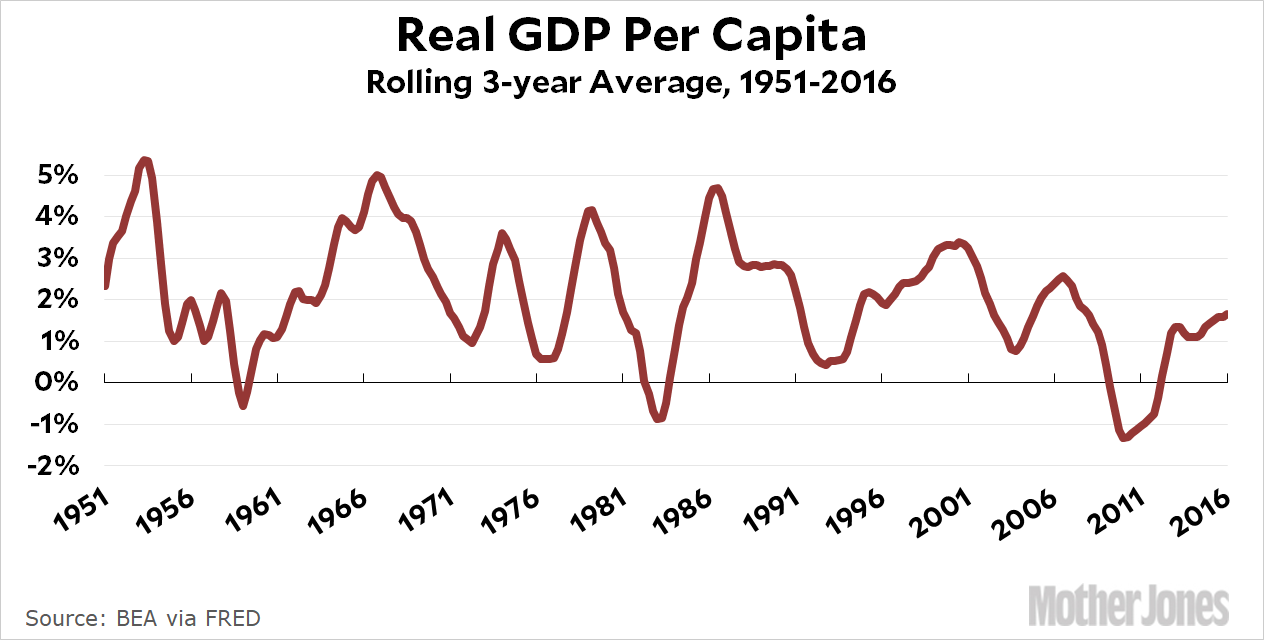Let’s see. What country am I in today? Oh yeah: the United States. Well, California, anyway, which is sort of an outlying territory these days. So let’s do something America-centric with a chart to get me back into non-vacation mode.
Alex Tabarrok points out today that the “Great Moderation” in the US economy appears to be alive and well: the economy doesn’t bounce up and down nearly as much as it used to. Here’s the basic chart:

Let’s count. In the four decades from the 50s to the 80s, the economy grew by more than 3 percent for a sustained period five times. It declined below zero twice.
In three decades since then, it’s grown by more than 3 percent once and declined below zero once.
Is that more moderate? I suppose so. But it’s pretty heavily weighted to moderation at the high end. Troughs have tended to hover around 1 percent growth for the entire era since World War II, while peaks have declined from around 4 percent to around 2 percent. Basically, the Great Moderation has been a moderation in the frequency of economic booms.
Do we know why this happened? Apparently not. But if I had to guess, I’d say it’s at least partly the result of a Fed that became so nervous of inflation after the 80s that it tamped down the economy anytime there was even a hint of upward price movement. Basically, they’ve been routinely taking the punch bowl away too soon, instead of allowing the economy to roar occasionally even at the risk of inflation getting a little high.
This is still happening today. Inflation hasn’t even hit the Fed’s 2-percent target over the past five years, let alone shown signs of going above it. And yet, the Fed is still fearfully pulling back, afraid to let the economy grow lest somehow, somewhere, inflation might rise to 3 percent or some other ghastly number.
This is the world we live in today. Recessions are still OK, but big economic booms aren’t. I’m not sure “moderation” is the right word for that.

















